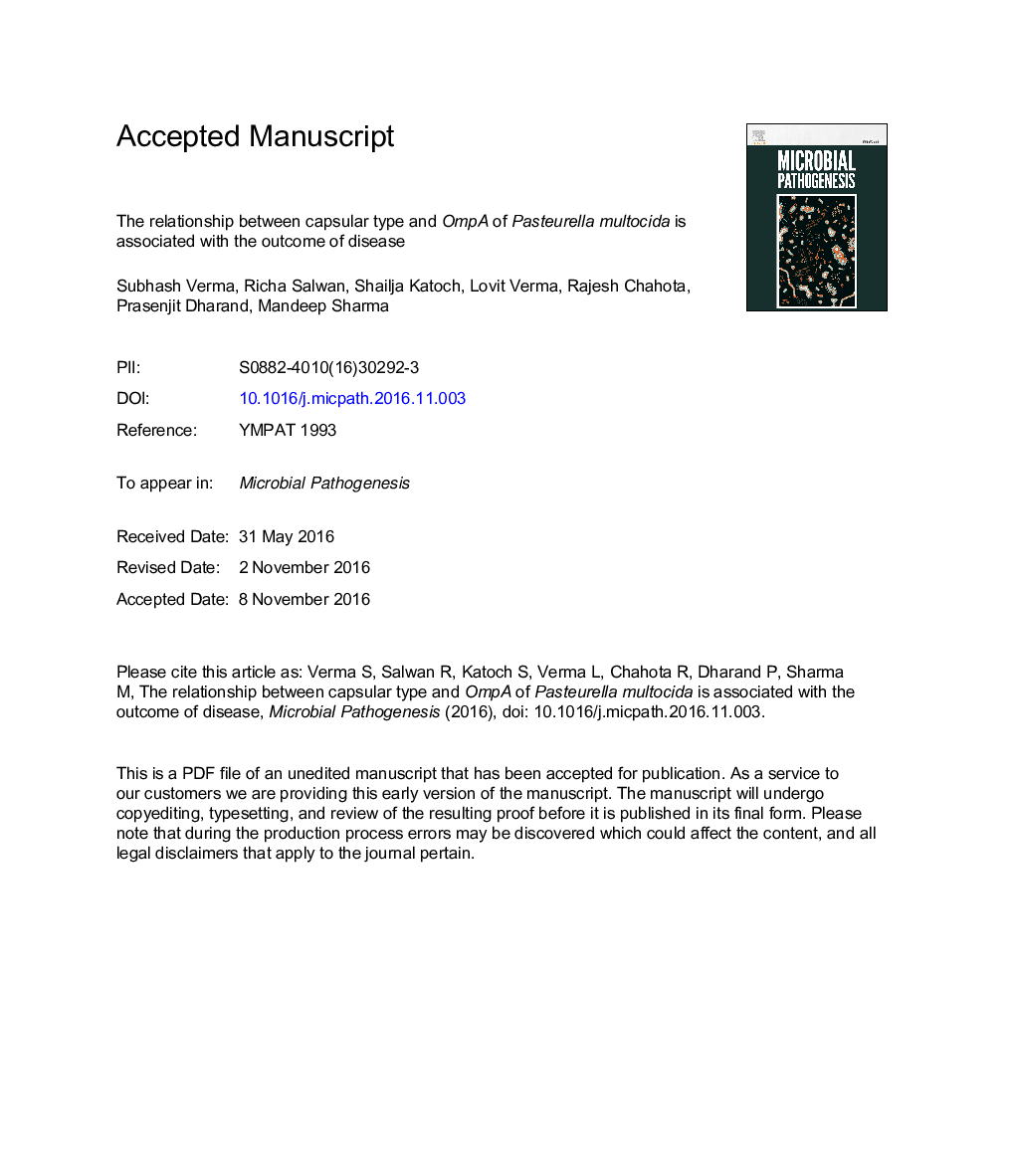| Article ID | Journal | Published Year | Pages | File Type |
|---|---|---|---|---|
| 5674091 | Microbial Pathogenesis | 2016 | 28 Pages |
Abstract
The genes encoding OmpA of Pasteurella multocida recovered from diseased and apparently healthy animals have been characterized. The nucleotide sequence revealed ORFs of 1047-1077 bp encoding proteins of 349-360 amino acids. Domain analysis of OmpA showed signal peptide, N-terminal ompA domain and C-terminal ligand binding domain. The transmembrane topology of OmpA showed short turns at the periplasmic end and longer irregular loops at the extracellular end. The phylogenetic analysis based on OmpA showed affiliation of isolates to 7 groups representing different alleles. The identical segments in OmpA also suggested assortative recombination within classes IV, V and VI of distinct lineages. Principal component analysis separated isolates into groups based on capsular type and PmompA alleles. The alleles belonging to class VI exclusively associated with capsular type A, whereas class I-IV were associated with capsular type B. PmompA alleles in class V were recorded in both serogroups. PmompA6.1, 6.4 were distributed among strains with capsular type A, and PmompA6.2 and 6.3 among capsular type B. Despite internal OmpA variabilty, restrictive and well defined distribution was seen amongst P. multocida. A definitive association of “OmpA-capsular type” was observed with clinical status of animals. A cohort of pasteurellae comprising of OmpA(I-IV)-capB was recovered from diseased animals and OmpA(VI)-capA from healthy subjects. This study concludes that P. multocida with serogroup A and B from healthy and diseased animals represent distinct clusters also differentiated based on their OmpA-types and OmpA-capsular type relationship possibly determine the virulence and disease outcome.
Related Topics
Life Sciences
Immunology and Microbiology
Microbiology
Authors
Subhash Verma, Richa Salwan, Shailja Katoch, Lovit Verma, Rajesh Chahota, Prasenjit Dhar, Mandeep Sharma,
